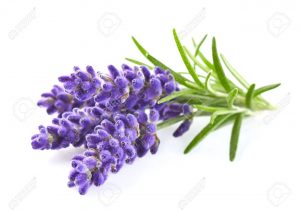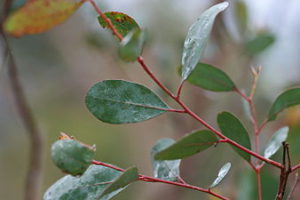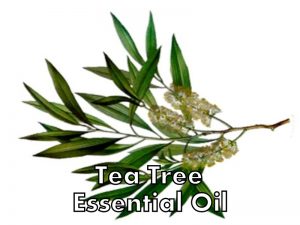I got stung recently myself. It was a beautiful Christmas day in sunny Australia. We all went for a swim and the kids could try out their new boogie boards that they got for Christmas. I spotted the blue bottle in the water and got out of the water and was standing on the shore whilst calling the kids to get out of the water because of the blue bottles. The next moment I felt this sudden pain on my left ankle. It is hard to describe it is stinging and burning at the same time. The blue bottle wrapped itself around my ankle and it was the concentration of the amount of tentacles that intensified the pain as well.
In my panic I look around and noticed the lifeguard on the beach patrol vehicle and was immediately thinking that if he takes me to the Surf Life Saving clubhouse then I can get access to hot water . He told me however to rub it with sand to remove it and gave me a bag of ice.
I was in agony for most of the day and of course started doing some research. Can essential oils bring some relief?
Understanding Bluebottles better

The most common jellyfish in Australia is the Portuguese Man-of-War jellyfish or also refer to as bluebottles.
Bluebottles are distinct for their blue tentacles and inflated floating sails. These inflated crest acts like a sail as they get pushed along by strong winds towards the shore. They are a common sight on the beach and should be treated with care even after they have washed out on shore.
The Director of the Australian Marine Singer Advisory Service, Lisa-ann Gershwin explains that bluebottles live in armadas in the middle of the ocean. “Some of the bluebottle sails are right-handed and some are left-handed, across the body, so when the wind comes up it only grabs the ones with the sail going the right way for that particular breeze. That is nature’s way to make sure they never becomes extinct.”
Dr. Gershwin is also the co-creator of The Jellyfish App that is a helpful tool to help with identification.
All over the tentacles are stinging cells and each stinging cell is like a little capsule with a harpoon coiled up inside and bathed in venom and it has a little hair trigger on one end that gets triggered by touching the skin. That coiled up harpoon then shoots out at 40 000 times the force of gravity and injecting the venom.
Symptoms
- Immediate pain. The intensity or severity of pain will depend on the amount of contact with the skin or the sensitivity of the area as well as the amount of poison released.
- a red line where the tentacle had contact with the skin
- swollen red line
- sometimes blisters can appear
- very rarely the sting will cause scarring
Treatment
- Carefully remove the tentacles by pulling it off and gently washing the area in sea water
- Rinse or immerse the area in hot water as hot as you can tolerate for about 10-20 minutes. The venom degrades at 40-45 degrees Celsius so any venom already injected into the skin can be deactivated by a submerging the area in a very hot bath.
- Ice packs are not as effective as hot water but if no hot water is available put an ice pack on it. The ice will prevent more venom from being injected but will do nothing for the previously injected venom.
What NOT to do
- Do not rub it with sand. This was a popular remedy in the 1950’s. Rubbing the area with sand or with a towel is actually counterproductive and may cause worsen the pain due to the nematocysts releasing more venom.
This was actually the advice from the lifeguard given to me. This certainly caused the pain level to escalate in my case.
- Do not rinse it with vinegar. This remedy has been a popular remedy since the 1970’s. Rinsing with vinegar is no longer considered an effective treatment. Studies from scientist at the University of Sydney have proved that the vinegar appeared to aggravate the area and there was no change in the pain level when using vinegar.
- Do not pee on it – well there is some relief because of the temperature of the urine but this is not a recommended treatment for blue bottle stings.
Getting medical help
- If the pain continues even after the hot water treatment visit a doctor. He might prescribe some cortisone cream to reduce the inflammation.
- If the person is getting distress and is developing chest tightness then call 000.
- If the area is large – more than half the limb or affecting a sensitive area such as the mouth or eye get medical help
Can I use Essential Oils to bring relief?
Why would this work?
Analgesic compounds of certain essential oils will calm the irritation and relieve itching.
Anti-inflammatory compounds will decrease the swelling and inflammation.
Always remember to dilute essential oils with a carrier oil though.
Lavender

Lavender oil contains two chemical compounds – Linalyl acetate and linalool.
Linalyl acetate is an ester which gives it the calming character and also the reason why it is safe to use undiluted on the skin in most individuals. Linalyl acetate also gives Lavender its anti- inflammatory and anti-bacterial benefits.
Lavender is antiseptic and analgesic (pain killing) and therefor very helpful for burns. It promotes healing and prevents scarring.
Geranium

Geranium is a great essential oil to use for skin health. It contains geraniol which is an anti-aging compound. Geranium is also a very soothing oil and great for stress relief. The chemical compounds in Geranium oil minimizes inflammation and calms the skin
Arnica oil
Contains helenalin which is a anti-inflammatory. Arnica also contains thymol wich is very effective vasodilator and acts as an anti-inflammotory to help with the healing process.
ONLY use diluted Arnica oil and only apply it to the skin. Don’t inhale or ingest Arnica oil.
I personally found the most relief with the combination of Arnica and Lavender oil after I got stung.
Frankincense

Help relieve chronic stress and anxiety.
Frankincense reduces discomfort and support a healthy response to inflammation. It also increases the activity of leukocytes which help the body fight unwanted microbial invaders.
Frankincense contains the chemical compound Alpha – pinene which has the ability to open the bronchial airways. This is helpful in individuals where the throat closes up after being stung.
WARNING – people with problems related to blood clotting should not use Frankincense oil before consulting their doctor.
Eucalyptus

The antiseptic and heling properties of Eucalyptus are well known to Aboriginals who would bind the Eucalyptus leaves on wounds. Eucalyptus essential oil is helpful in wound care and help to form new tissue as the wound heals. Eucalyptus need to be diluted in a carrier oils.
Tea tree

Tea tree essential oil has anti-microbial and anti-fungal properties and is an absolute go –to oil for insect bites, cuts and stings. Tea tree can however irritate the skin and therefore is suitable for people with sensitized skin or who has reacted allergically to other substances. Therefor Tea Tree oil would not be on my top list of oils to use . I reached for the Lavender bottle rather than the Tea Tree oil.
What to pack in your beach bag?
From now on I have the following items in my beach bag:
- tweezers to remove tentacles
- a heatpack
- Lavender essential oil
Enjoy your time in the sun and remember to be safe.
